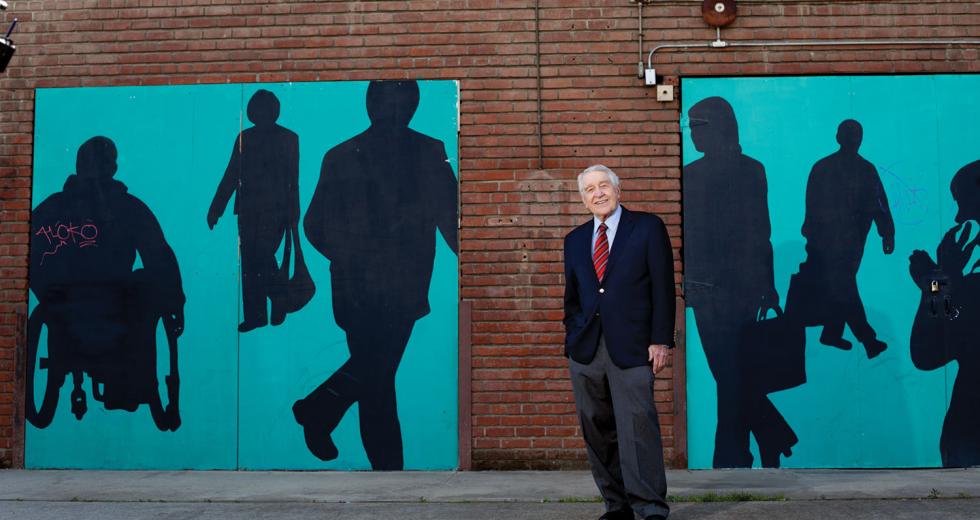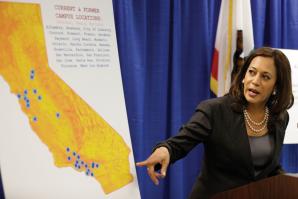Andrew Nelson was raised in the horse-dotted hinterlands of Sacramento, served in the U.S. Air Force in Afghanistan and Iraq, attended community college in Rocklin and is set to attend a prestigious four-year university in hopes of becoming a teacher and education administrator.
In short, the community college student symbolizes what many contend this state needs to survive and thrive, and what California stands to lose in its slashing of community college budgets.
“Businesses want to be here, but we need an educated workforce,” says Nelson, a 27-year-old Orangevale native and Sierra College student planning to transfer to UC Davis in the fall. “We need community colleges to turn out students with technical training and education to go forward. It’s absolutely key to the vitality of our communities.”
Because state revenues fell short of projections, Gov. Jerry Brown slashed $980 million from California’s 2011-2012 budget, part of the mid-year “trigger” cuts, including $102 million in state aid to community colleges, on top of earlier reductions.
The state’s community college system has been gutted from three years of cuts, and the latest wave of reductions are hitting at a time when buildings and infrastructure need upgrades, and the state is desperate to attract business as a road out of economic ruin.
Rural community colleges are particularly vulnerable, as rumors of consolidation and closure rumble through their administrative offices and the state Legislature.
To combat the ravages of drained revenues, community colleges are teaming up to form money-saving partnerships and rescue programs. Districts also are reaching directly out to businesses, creating conduits between community college programs and workers in demand.
Jack Scott, California’s community college chancellor, says he is encouraging district administrators to find innovative ways to streamline programs and services.
“These are rather dire circumstances we’re facing,” he says of the budgetary outlook. “We’re trying to save money any way we can.”
Scott says, “Disinvesting in the 2.6 million students that attend the state’s community colleges is not the path that should be taken if lawmakers want an educated workforce to power California’s economic recovery.”
Students will bear the brunt of the budget cuts through fee increases. For community college students, per-unit fees at colleges on the semester system will rise from $36 to $46 beginning next summer, while at colleges on the quarter system, fees will climb from $26 to $33. That means full-time students enrolled in a typical load of 15 units would pay $1,380 annually to attend most community colleges.
California’s community college system sustained an 8 percent budget cut two years ago and another 5 percent reduction last year. For the fiscal year starting July 1, 2010, its budget was cut by $410 million. In the meantime, the state Legislature raised student fees by $10 to a total of $36 per unit. The combination of cuts and fees provided a net cut to community colleges of $290 million for the current fiscal year.
J.P. Sherry, general counsel for the Los Rios Community College District in Sacramento, says the budget situation is disheartening for the state’s community colleges. Los Rios, which has four campuses, would experience about 4.4 percent of the statewide cuts, he says.
He points out that the current budget requires community colleges to slash $30 million immediately, even with soaring student fees.
The Los Rios board of trustees is in the third year of a four-year plan to address the budget crunch through a combination of actions: “Treating ongoing funds as one-time dollars and budgeting those funds carefully, requiring our employees to bear the expenses of the increases in medical coverage, (and) selectively reducing the number of courses we offer, while maintaining as much access as possible to our core programs,” Sherry says.
Despite cost cutting, the district educates 9,000 students — about 9 percent of the student body at the four campuses — for whom they receive no state funding.
“The true tragedy of this budget crisis is that we are currently only able to serve about 82,000 students in our service area,” Sherry says. “Without this crisis and its budget constraints, we would expect to be serving almost 95,000 students this year.”
The district has joined with 13 other Northern California community colleges to obtain legal advice on human resource matters. For a monthly fee, a law firm agreed to conduct training sessions for human resource directors at Los Rios, Yuba and Butte community colleges, among other smaller districts.
Sherry says costs are controlled through video conferencing for remote districts and pooling resources to pay for training on a pro rata basis. The monthly retainer also allows human resource directors in the consortium to contact a lawyer for quick questions without incurring additional legal fees.
The cumulative effects of California’s dwindling investment in higher education have been devastating for the community college system. Since the 2007-2008 academic year, spending per student when adjusted for inflation declined by 10.6 percent, while per-unit fees increased over the same period by nearly 80 percent.
The reductions mean fewer instructors, fewer classes and fewer students served.
“We’ve cut back on courses,” Scott says. “The primary expense of community colleges is instruction. Three years ago, 140,000 students were turned away. Now, it’s topping 200,000 students. We’re having to dip into reserves. And students are finding it more difficult to get classes, extending the time needed to graduate.”
The cuts and the fee increases mean the state’s poorest and those most in need of academic skills will suffer, he says.
I’ve seen classrooms with rain soaking through tiles and bowing floors…Forget hiring faculty, we have to take care of health and safety issues.
JOHNNIE TERRY, PROFESSOR, SIERRA COLLEGE
The strain is apparent in campus buildings and facilities, already overdue for upgrades, says Johnnie Terry, a philosophy and humanities professor at Sierra College.
“When the economic crisis hit, they asked us to give up our department budget, which was $200 a year,” Terry says. “That basically paid for printer cartridges. The facilities are aging. I’ve seen classrooms with rain soaking through tiles and bowing floors, and there’s sometimes flooding in classrooms. Forget hiring faculty, we have to take care of health and safety issues, such as making sure walkways are safe and roofs aren’t leaking. So other, more secondary needs get pushed back even further.”
Nelson says he worries about faculty and students during the next round of budget cuts.
“It means less financial aid so students can afford school, and affects the math labs and student writing centers. These may seem superficial, but they’re very important parts of a student’s education,” he says. Reduction in staff hours means fewer second-line services, too, such as libraries.
“It’s already difficult for students to get counselors for advising, so they’re left on their own to figure out what they need,” Terry says. “That has lengthened considerably the amount of time to graduate. It passes the cost of education on to individual households — and taxpayers — as they apply for financial aid for a longer period of time.”
One of the challenges in the community college system is a weak centralized governing body, Terry says. Because each district exists independently, students often can’t transfer between community colleges and take credits with them.
“These are independent districts and not like branches of the same library system,” he says. “Many people don’t know that, not even students. Many students get tripped up in that.”
Some statewide moves are being made to streamline student credit transfers between districts. Douglas Houston, chancellor of Yuba Community College District, is leading an effort to band together smaller, rural community college districts to save money. He says many of these colleges are politically weak.
“Rural community colleges in California are in peril right now, especially small, single-college districts,” he says. “For small college districts, there’s all this administrative structure necessary to run a college but no way to spread costs or enjoy economies of scale.”
Houston says many rural community colleges could be on the brink of closure or consolidated into several larger districts with satellite centers.
“If the public-sector economy continues to shrink, many districts are at great risk of collapsing,” he says. “There is conversation of state policy and talk of legislation to consolidate or close. Many feel it would be more efficient as a statewide system, but if you’re a resident of rural California, you don’t want to lose the only college of higher learning in your community. In many cases, there are hundreds of miles between institutions.”
Houston is proposing smaller rural colleges band together to share administrative services, such as database administrators for student records, course schedules, personnel and payroll. Using the Internet and video conferencing, colleges could also share instructional programming. The potential cost savings could be in the millions of dollars, he says.
While Chancellor Scott acknowledges state budget cuts are a result of the recession denting tax revenues, he calls community colleges the bridge between high school and higher learning or vocational training.
“This is the largest workforce preparation institution in state,” Scott says. “If we have to contract these programs, and stop the supply of trained workers, it will hurt the economy.”
California needs workers trained in high tech, entertainment and the international trade industries, he says. Budget cuts would also impact students trying to transfer to four-year colleges and those in vocational programs, including nursing, radiology, auto services and printing trades, Scott says.
The U.S. Department of Labor predicts 19 percent growth in such “middle-skilled” professions between 2008 and 2018.
Scott says graduates of four-year colleges earn about $1 million more over a lifetime than their counterparts who don’t go to college. And a recent University of California, Berkeley, study shows that for every dollar spent on higher education, the state gains three additional dollars in tax revenues from higher-paid workers.
“Spending on higher education is an investment,” Scott says, “not a cost.”
Recommended For You

Renewable Resources
Los Rios prepares to roll out updated student support services
Thomas Hanns was homeless when he first enrolled in classes at Sacramento City College, one of four main campuses that make up the Los Rios Community College District.




